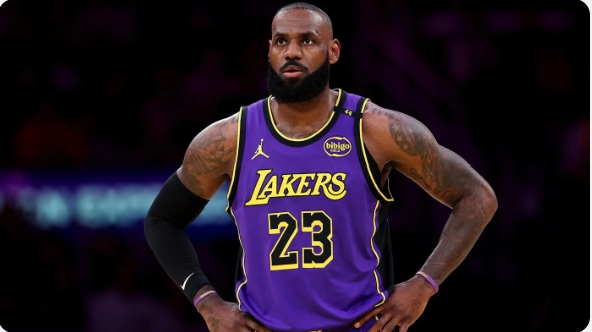LeBron James didn’t sign a max contract when he joined the Miami Heat in 2010. Instead, he took slightly less as a way to help Miami put the best possible roster around him. They won two championships in the years that followed, but the Heat also took advantage of James’ generosity in ways that reportedly bothered him. They waived key role player Mike Miller using the amnesty clause, for instance, purely to save money against the luxury tax. When James became a free agent again in 2014, he made it clear from the jump that there would be no more discounts. He would only consider signing for the maximum salary.
From 2014 through 2024, that remained the case. He was worth every penny, and as long as that remained the case, there was a widespread assumption that he would continue to receive his highest possible salary. But with the Los Angeles Lakers severely restricted in terms of spending power, James reportedly offered them a gift: he would be willing to take a significant pay cut — roughly in the neighborhood of $15 million — to help them pursue anyone on a short list approved free agents using either the mid-level exception or a sign-and-trade.
“He is prioritizing a roster improvement,” James’ agent, Rich Paul, told ESPN’s Dave McMenamin at the time. “He’s been adamant about exuding all efforts to improve the roster.
The Lakers made a run at Klay Thompson. They wound up losing out to the Dallas Mavericks. So James rescinded his offer, still giving up a much smaller figure in order to help the Lakers avoid the dreaded second apron, but ultimately re-signing for $104 million over two years. However, given the player option on the second year of that deal, there was surely some hope that he would consider renewing that offer for a pay cut under the right circumstances.
For now, however, that seems unlikely. All of the reporting to this point suggests that James is expected to opt into the final year and $52.6 million on his current deal. While it is not clear why, at this juncture, James has placed less of a priority on improving the Lakers roster, the end result is a more difficult path to improvement for the Lakers this offseason.
Should James and Dorian Finney-Smith pick up their player options for next season, the Lakers would enter the offseason roughly $4 million below the first-apron threshold and around $16 million below the second. In a perfect world, the Lakers would want to stay below the first apron. That would give them the roughly $5.7 million taxpayer mid-level exception to use in free agency rather than the heftier $14.1 million full mid-level exception. It would also unlock the bi-annual exception, worth around $5.1 million, to spend on another free agent, and it would give them the freedom to acquire free agents through sign-and-trades. During the season, teams below the first apron can sign anyone waived on the buyout market. Teams above the first apron can only sign bought-out players if their previous salaries were below the non-taxpayer mid-level exception. All in all, this is a pretty significant amount of flexibility we’re talking about here. There are other ways that the Lakers could generate it, most simply by dumping salary through trades. By far the simplest, though, would be a sacrifice on James’ part.
Let’s get this clear from the outset: LeBron James still deserves a max salary. He’s a reigning Second-Team All-NBA selection for crying out loud. Bleacher Report’s Andy Bailey tracks a stat he calls HNI, or “Huge Nerd Index,” which ranks every player in the NBA by their average ranking in eight of the most widely-used catch-all metrics. James, even at 40, tied for 16th, ironically with former teammate Anthony Davis. While there is obvious fear of age-related decline for any high-usage quadragenarian, James has historically been an exception. He might be worse next season. He’s unlikely to be so much worse that he no longer justifies a max salary in a world in which Paul George and Bradley Beal also get one. When last we saw LeBron, he was still a max-level player.

